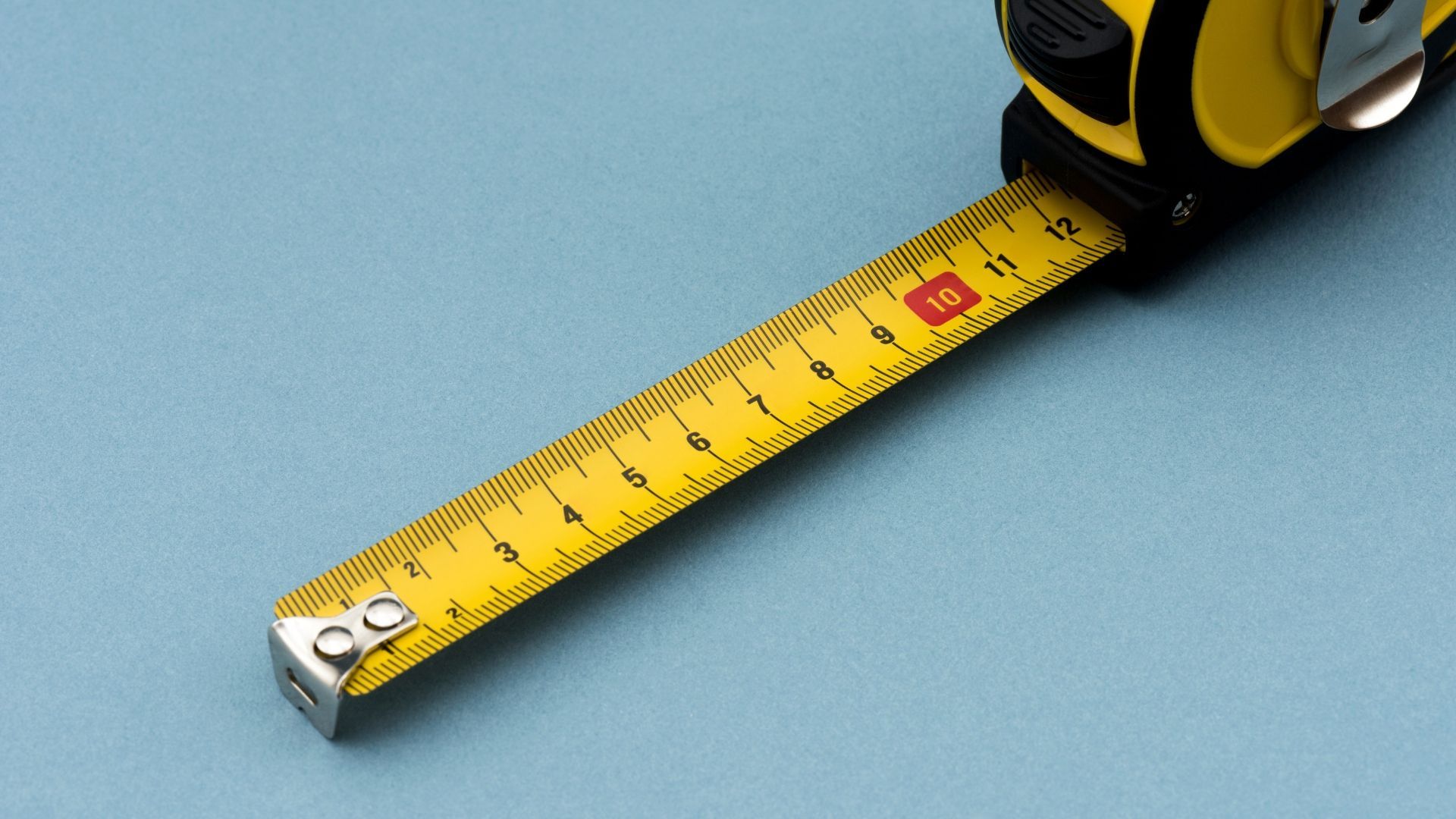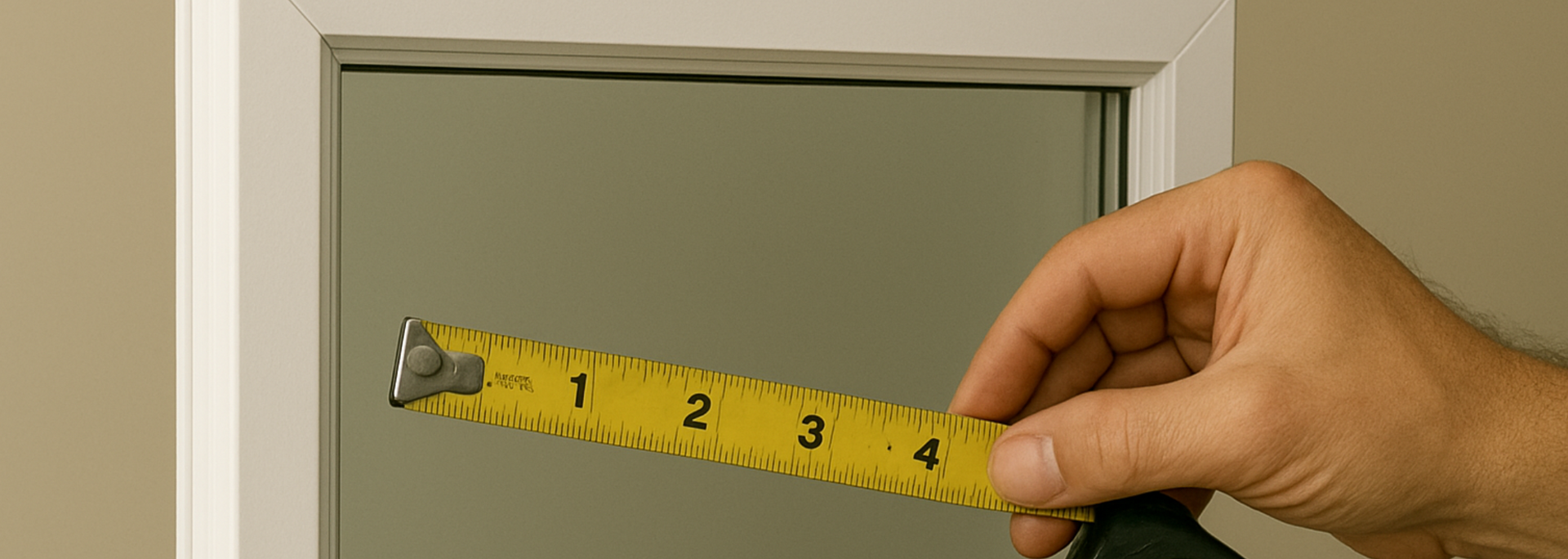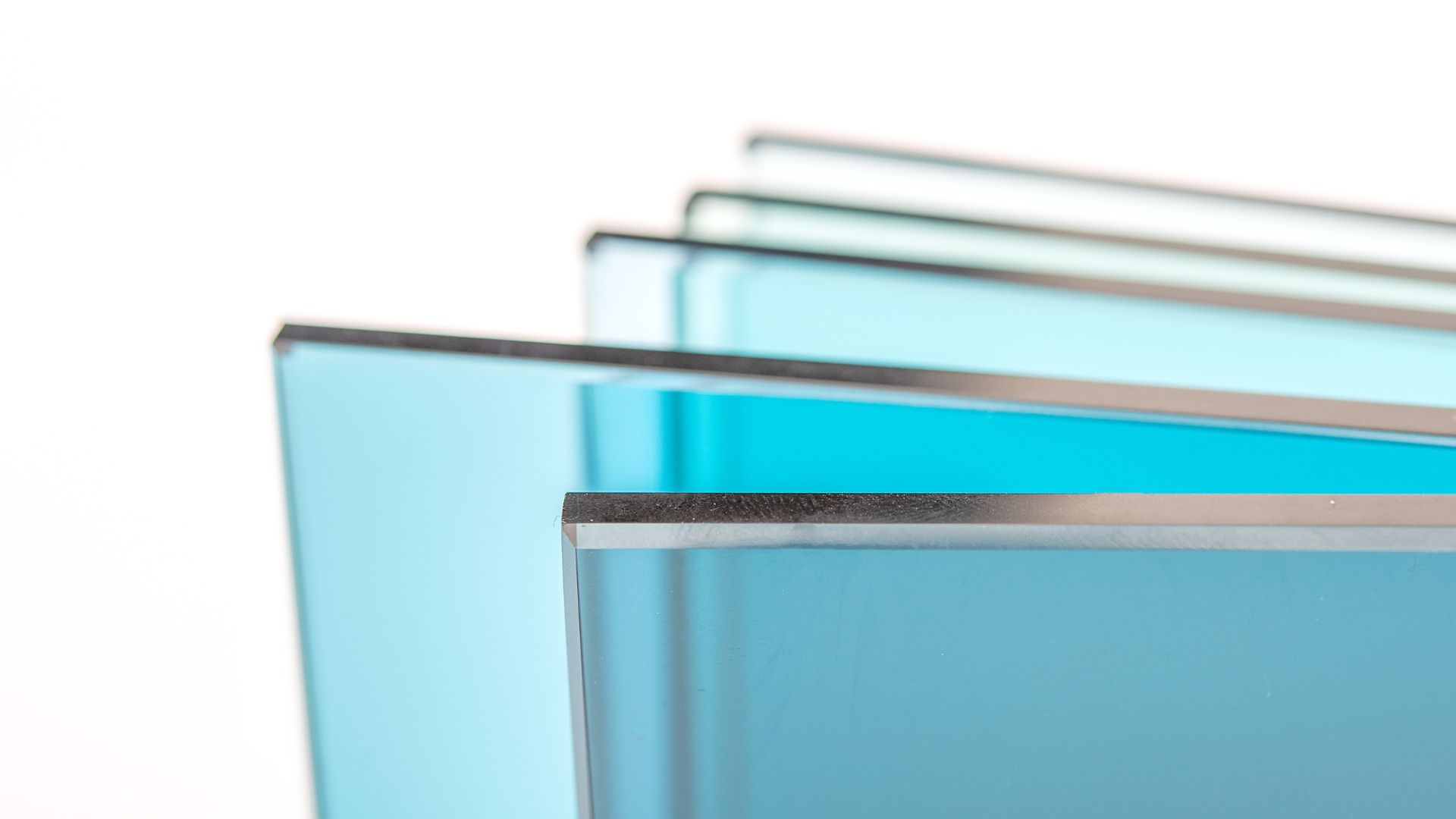How to measure the thickness of glass
Share this blog:
If you're a designer, architect or project manager, you may need to measure the thickness of glass. Learn how to in our guide.

When overseeing an architectural or design project, you may find yourself needing to specify the thickness of a piece of glass.
In some cases, this is a case of fitting a new piece of glass into an existing frame. In others, it will be a case of meeting building regulations and safety standards, particularly in the context of structural or architectural glazing.
Thankfully, measuring the thickness of glass isn't a difficult job, although it does require some equipment you may not have to hand. You also go about the task differently depending on whether the glass is in its frame or has been removed.
Measuring glass in a frame
If the glass is in its frame, you can use a glazing gauge or measure the frame with a ruler or tape measure.
A glazing gauge has a U-shaped section (typically made of metal) and a sliding measuring gear. The gauge is attached to the frame or glazing unit, a little like a vice. Once in position, you can take accurate measurements.
If you don't have a glazing gauge, you can take measurements with a ruler or tape measure. This will, however, be less precise than a gauge.
First, you measure the total thickness of the frame. Next, you measure the distance between the glass and the frame on either side. You can then calculate the thickness of the glass by subtracting the sum of the inset measurements from the total thickness of the frame.

Measuring glass removed from its frame
If the glass has been removed from its frame, you can measure it with callipers or a ruler. Callipers are best for smaller pieces of glass, whereas rulers are best if a rough estimate is enough.
It's worth bearing in mind that glass processors want precise measurements – so the more precise, the better.
How thick can toughened glass be?
Toughened glass (also known as tempered glass) can come in a range of thicknesses. For most applications, this can be anywhere between 3 mm and 19 mm. For electronic devices, toughened glass can be as thin as 0.3 mm.
At ToughGlaze, we specialise in toughened glass for non-electronic applications. The thickness you choose will depend on the level of strength and safety your project requires. Our
toughened glass products have a thickness range of 4 mm to 19 mm.
How thick can laminated glass be?
Laminated glass can come in a wide range of thicknesses, depending on what it's being used for. It can range from around 6 mm to 60 mm.
At ToughGlaze, our thickness range for laminated glass is 9.5 mm to 60 mm. Your choice of thickness will depend on the application and the level of safety, security and sound insulation you require.
Get
toughened and
laminated glass cut to a thickness of your choosing with ToughGlaze today. It's easy to
request a quick quote online.









